Figure shows an aluminum rod joined to a copper rod. Each of the rods has a length of and area of cross-section . The junction is maintained at a constant temperature and the two ends are maintained at . Calculate the amount of heat taken out from the cold junction in one minute after the steady-state is reached. The conductivities are and .



Important Points to Remember in Chapter -1 - Heat Transfer from H C Verma CONCEPTS OF PHYSICS [VOLUME 2] Solutions
1. Heat Transfer:
There are three modes by which heat energy transfers from a body at a higher temperature to a body at a lower temperature.
(i) In conduction, heat is transferred from one point to another without the actual motion of heated particles.
(ii) In the process of convection, the heated particles of matter actually move.
(iii) In radiation, the intervening medium is not affected and heat is transferred without any material medium.
| Conduction | Convection | Radiation |
| Heat Transfer due to Temperature difference | Heat transfer due to density difference | Heat transfer without any medium |
| Due to free electron or vibration motion of molecules | Actual motion of particles | Electromagnetic radiation |
| Heat transfer in solid body (in mercury also) | Heat transfer in fluids (Liquid + gas) | All |
| Slow process | Slow process | Fast process |
| Irregular path | Irregular path | Straight line (like light) |
2. Thermal conduction:

(i) Variable state: In this state temperature of each part of the rod increases.
(ii) Steady state: At this stage temperature of each part of the rod becomes constant.
(iii) Temperature gradient: Rate of change of temperature with the distance between any two points along the length of the rod.
Temperature gradient
Unit:
(iv) Rate of heat flow(in steady state) or
(v) Thermal resistance
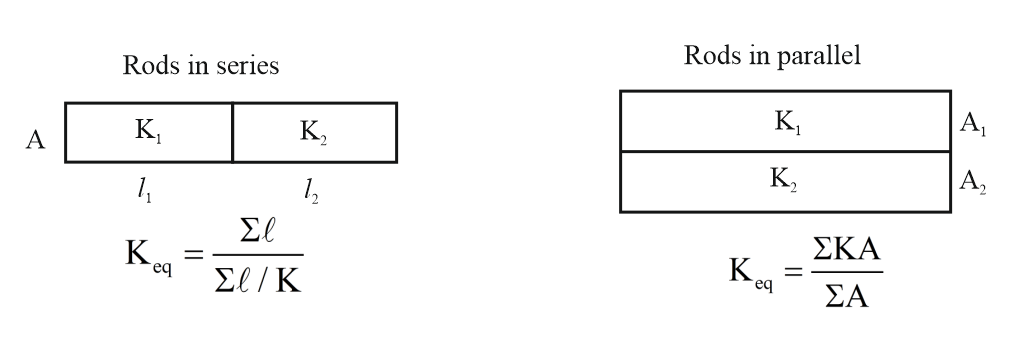
(vi) Growth of Ice on Ponds
Time taken by ice to grow a thickness from to
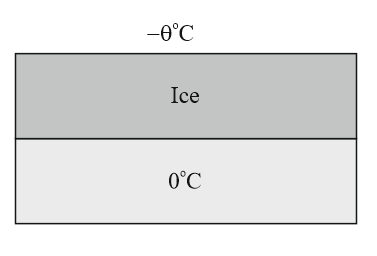
thermal conductivity of ice, density of ice
3. Radiation:
Energy transfer in the form of electromagnetic waves through any medium.
Due to incident radiations on the surface of a body following phenomena occur by which the radiation is divided into three parts.
(i) Reflection
(ii) Absorption
(iii) Transmission
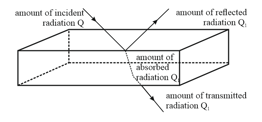
From energy conservation
(a)
(b) Reflective Coefficient:
(c) Absorptive Coefficient:
(d) Transmittive Coefficient:
(e) and Perfect reflector
(f) and Ideal absorber (ideal black body)
(g) and Perfect transmitter (Daithermanons)
(h) Reflection power
(i) Absorption power
(j) Transmission power
(k) A hot body emits radiation of all wavelengths.
(l) The wavelength corresponding to maximum emission of radiations shifts from longer wavelength to shorter wavelength as the temperature increases. Due to this, the color of a body appears to be changing.
4. Prevost's theory of heat exchange: A body is simultaneously emitting radiations to its surroundings and absorbing radiations from the surroundings.
5. Stefan's Boltzmann law:
Radiated energy emitted by a perfect black body per unit area/sec is
(i) For a general body [Where ]
(ii) If surrounding has temperature , then
6. Newton's law of cooling:
If temperature difference is small
Rate of cooling
[where constant]
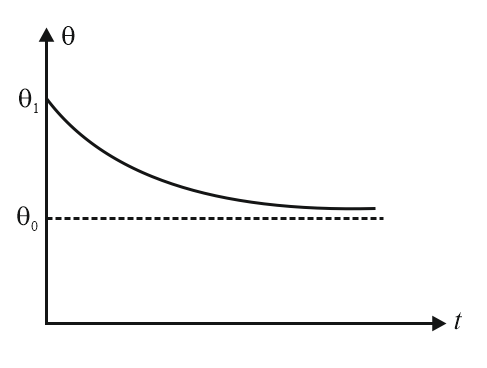
when a body cools from to in time '' in a surrounding of temperature then, [where constant]
7. Kirchhoff's law:
The ratio of emissive power to absorptive power is same for all surfaces at the same temperature and is equal to the emissive power of a perfectly black body at that temperature.
Therefore, a good absorber is a good emitter.
(i) Perfectly Black Body: A body that absorbs all the radiation incident on it is called a perfectly black body.
(ii) Absorptive Power : Absorptive power of a surface is defined as the ratio of the radiant energy absorbed by it in a given time to the total radiant energy incident on it in the same time.
For an ideal black body, absorptive power
(iii) Emissive power : For a given surface it is defined as the radiant energy emitted per second per unit area of the surface.
8. Wien's Displacement Law:
Product of the wavelength of most intense radiation emitted by a black body and absolute temperature of the black body is a constant Wein's constant
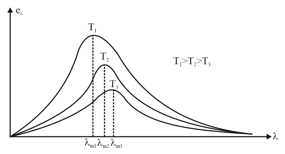
Area under graph
9. Solar Constant:
The energy emitted by the sun per sec (Where is the radius of the sun and its temperature),
This energy will spread over a sphere of radius ( average distance between sun and earth); while reaching Earth so the intensity of solar radiation at the surface of the earth (called solar constant ) will be given by
